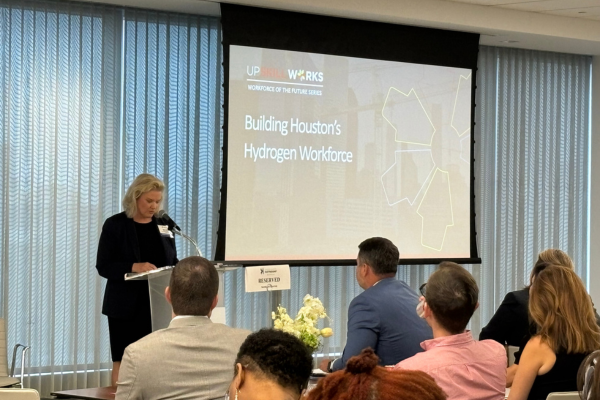10 Key Points from Partnership White Paper on Public School Finance
Published Feb 18, 2019 by Ben Melson

Texas educates nearly ten percent of the total K-12 population in the United States with school districts employing more than 700,000 staff members annually, representing a sound segment of our region’s current and future workforce. However, our schools lack appropriate and accountable funding which puts our workforce at risk, due in part to Texas’ complex and outdated school finance system.
Ahead of the 86th Legislative Session and throughout Fall of 2018, the Partnership’s Education Advisory Committee, chaired by Andy Waite, has worked diligently to examine the current method of funding public schools, detect critical failures in the system, and identify a set of principles that should be included in any school finance reform legislation. Those principles reflect the foundation of our belief that the school finance system should effectively and adequately address the state's changing student demographics, growing burden of recapture, and the long-term workforce needs of our state.
A result of those efforts was the release of a public school finance white paper detailing how the current school finance system is failing to provide Texas children with a quality education and why the school finance system needs reform.
Here are the top ten takeaways from the Partnership’s School Finance white paper:
1. The outdated formula funding system doesn’t account for the diversity of Texas’ student population or the transformation in viable industry jobs and career pathways for students.
2. Several integral formula funding elements including the transportation allotment and the cost of education index have not been updated since they were first introduced over 25 years ago.
3. Over the past ten years, the burden of funding education has steadily shifted toward the local districts. For the 2017-18 school year, local school districts are providing about 62 percent of funding while the state's share continued its decline to an estimated 38 percent.
4. Roughly six in 10 students in Texas are considered economically disadvantaged and one in five are English language learners, ranking the state ninth and second nationally in those categories.
5. While 73 percent of Texas' 2010 high school graduating class enrolled in a post-secondary institution, only 28 percent achieved a post-secondary (P.S.) credential within six years of graduation.
6. Of those students who achieved a P.S. credential within six years of graduation, only 12 percent were low-income students.
7. About 201,000 students graduated from a Texas high school in 2010 and failed to attain a post- secondary credential within six years.
8. 41 percent of Texas third graders read at their grade level. This is a critical point in a child's development as they "learn to read" leading up to third grade and "read to learn" in the years after.
9. A shrinking labor market is now the number one concern of business executives in Texas, with 66 percent reporting difficulty finding and hiring qualified workers.
10. By the year 2024, 50 to 60 percent of jobs in the Houston metro area will require training beyond high school.
The full white paper is available here.
 The Houston Report
The Houston Report




















